Author: JB
CB31/037 instruction manual EN/wp-content/uploads/2023/08/cb31_037mane.pdfCB41/037 instruction manualEN/wp-content/uploads/2023/08/cb41_037mane.pdfICP 1×0 instruction manualEN/wp-content/uploads/2023/08/icp1x0mane.pdfKD37 datasheetEN/wp-content/uploads/2023/08/kd37_en.pdfKD41 datasheetEN/wp-content/uploads/2023/08/kd41_en.pdfKSI80V/KSI82V instruction manualEN/wp-content/uploads/2023/11/ksi80vmane.pdfKS80D datasheetEN/wp-content/uploads/2023/11/1-10_alt.pdfKS80C/KS81 datasheetEN/wp-content/uploads/2023/11/1-10_ks74b_ks80c.pdfLV102 instruction manual (german)EN/wp-content/uploads/2023/08/lv102man.pdfLV103...
PDF Instruction Manuals for Instruments
Instruction manual IEPE100EN/wp-content/uploads/2023/08/iepe100mane.pdfInstruction manual M12 Version CEN/wp-content/uploads/2023/08/m12mane.pdfInstruction manual M14EN/wp-content/uploads/2023/08/m14mane.pdfInstruction manual M29EN/wp-content/uploads/2023/08/m29mane.pdfInstruction manual M33EN/wp-content/uploads/2023/08/m33mane.pdfInstruction manual M72 seriesEN/wp-content/uploads/2023/08/m72mane.pdfInstruction manual M208AEN/wp-content/uploads/2023/08/m208amane.pdfInstruction manual M208BEN/wp-content/uploads/2023/08/m208bmane.pdfInstruction manual MQ20 / MQ40EN/wp-content/uploads/2023/08/mq20_40mane.pdfInstruction...
PDF Instruction Manuals for Sensors and Accessories
Booklet “Piezoelectric Accelerometers – Theory and Application”EN/wp-content/uploads/2023/08/aufnehmerman.pdfInstruction manual KSI84xxEN/wp-content/uploads/2023/08/ksi84man.pdfInstallation instruction for probe accelerometer KST94EN/wp-content/uploads/2023/08/kst94man.pdfInstruction manual calibration adapter KST94EN/DE/wp-content/uploads/2023/08/kst94_ca_mane.pdfInstructions for rriaxial mounting cubes 030 / 130 / 230EN/DE/wp-content/uploads/2023/08/x30man.pdf
PDF Folders and Catalogs
Short form catalogEN/wp-content/uploads/2023/08/shortform.pdfFolder Signal ConditioningEN/wp-content/uploads/2023/08/folder_conditioning.pdfFolder CalibrationEN/wp-content/uploads/2023/08/folder_calibration.pdfFolder Vibration monitoringEN/wp-content/uploads/2023/08/folder_monitoring.pdf
10. Standards
The following list shows you a compilation of standards related to vibration measurement.
Notice: DIN ISO and DIN EN ISO is found under ISO
Number / SourceTitleANSI S2.1Vibration and Shock – VocabularyANSI S2.2Methods for the Calibration of Shock and Vibration PickupsANSI S2.4Method for Specifying the Characteristics of Auxiliary Analog Equipment for Shock and Vibration MeasurementsANSI S2.7Balancing TerminologyANSI S2.13Mechanical Vibration of Non-Reciprocating Machines – Measurements on Rotating Shafts and EvaluationPart 1: General GuidelinesANSI S2.16Vibration Noise Measurements...
9. TEDS
Intelligent Accelerometers to IEEE 1451.4
Introduction
The standard IEEE 1451complies with the increasing importance of digital data acquisition systems IEEE 1451 mainly defines the protocol and network structure for sensors with fully digital output. Part IEEE 1451.4, however, deals with “Mixed Mode Sensors”, which have a conventional IEPE compatible output, but contain in addition a memory for an “Electronic Data Sheet”. This data storage is named “TEDS” (Transducer Electronic Data Sheet). The memory of 64 + 256 bits contains all important technical data...
8. Accelerometer Cabling
Cables and connectors are typically the weakest link of a measuring chain.
In our sensor data sheets you find recommendations for suitable cables.
Choosing the right sensor cable is of particular importance for accelerometers with charge output. When a coaxial cable is subjected to bending or tension this may generate local changes in capacitance. They will result in charge transport, the so-called triboelectric effect. The produced charge signal cannot be distinguished from the sensor output. This can be troublesome when measuring low vibration with charge transducers. Therefore Metra...
7. Accelerometer Mounting
Choosing the optimum mounting arrangement will significantly improve the accuracy.
For best performance, particularly at high frequencies, the accelerometer base and the test object should have clean, flat, smooth, unscratched and burr-free surfaces.
A scratched accelerometer base can be applied to a lapping plate for restoration of flatness. If lapping is not possible, other machining processes such as grinding, spot facing, milling, turning, etc., can produce acceptably flat mounting surfaces.
It is also important to provide a stiff mechanical connection between the sensor and the...
6. Instrumentation
Transducers with Charge Output
Transducers with charge output have some special properties which require particular attention in order to obtain precise measuring results:
Always use special low noise cables.
The cable length must not exceed 10 meters.
The cable should not be moved during measurement.
All connector nuts must be tightened.
Preferably charge amplifiers should be used. It is also possible to use AC voltage amplifiers with high impedance input. Both principles are described below.
Charge amplifier
Accelerometers with charge output generate an output signal in the...
5. Accelerometer Characteristics
Metra utilizes for factory calibration a modern PC based calibration system. The calibration procedure is based on a transfer standard which is regularly sent to Physikalisch-Technische Bundesanstalt (PTB) for recalibration. Metra offers accredited and factory calibrations for sensors and instruments. Our sensors, with few exceptions, are supplied with an individual calibration chart which corresponds to a factory calibration. It shows all individually measured data like sensitivity, transverse sensitivity, insulation resistance, IEPE bias voltage and frequency response curve. Additionally,...
4. IEPE Standard
Metra manufactures many accelerometers featuring a built-in preamplifier. It transforms the high impedance charge output of the piezo-ceramics into a low impedance voltage signal which can be transmitted over longer distances. Metra uses the well-established IEPE standard for electronic accelerometers ensuring compatibility with equipment of other manufacturers. IEPE stands for “Integrated Electronics Piezo Electric”. Other proprietary names for the same principle are ICP®, CCLD, Isotron®, Deltatron®, Piezotron® etc.
Theory of Operation
The built-in circuit is powered by a...
3. Accelerometer Designs
The basic function, i.e. the conversion of mechanical acceleration into an electric signal, is identical for all kinds of piezoelectric accelerometers. The reason for using different piezoelectric systems is their individual suitability for various measurement tasks and their varying sensitivity to environmental influences.
We use three different mechanisms for the mechanical-to-electrical conversion. Our type codes “KS”, “KD” and “KB” are derived from these designs.
Shear system (“KS”)
Compression system (“KD”)
Bending...
2. Piezoelectric Principle
A piezoelectric material is fixed in the transducer housing. The figure below illustrates the piezoelectric effect with the help of a compression disk. This resembles a ceramic capacitor with two electrodes facing each other. A force acting perpendicular to the electrode surface causes a charge shift in the ceramic and can be picked up as a voltage across the electrodes.
A piezoelectric accelerometer consists of two major parts:
Piezoelectric material
Seismic mass
One side of the piezoelectric material is connected to a rigid post at the sensor base. The so -called seismic...
1. Introduction
What is the purpose of vibration sensors?
Movements occur in many areas of our lives:
The car is rolling, a compressor is working, a machine tool is grinding, an excavator is digging a pit, aircraft engines are turning, conveyor belts and grippers are transporting packages, I live on a busy street. All movements generate vibrations and shocks intentionally, unintentionally as a side effect or also through wear. Often they are disturbing, if only they are big enough: The car rumbles, the compressor vibrates, the machined parts become imprecise and rough, the excavator operator is jolted, an...

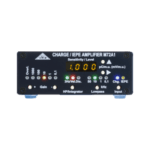 Signal Conditioners
Signal Conditioners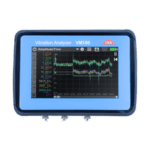 Vibration Meters
Vibration Meters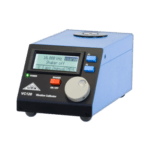 Vibration Calibrators
Vibration Calibrators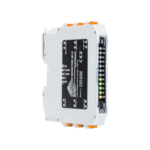
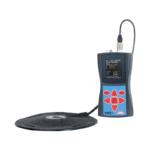 Human Vibration
Human Vibration Building Vibration
Building Vibration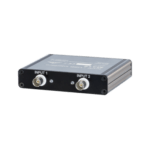 PC Data Acquisition
PC Data Acquisition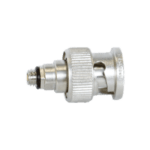 Cables and accessories
Cables and accessories